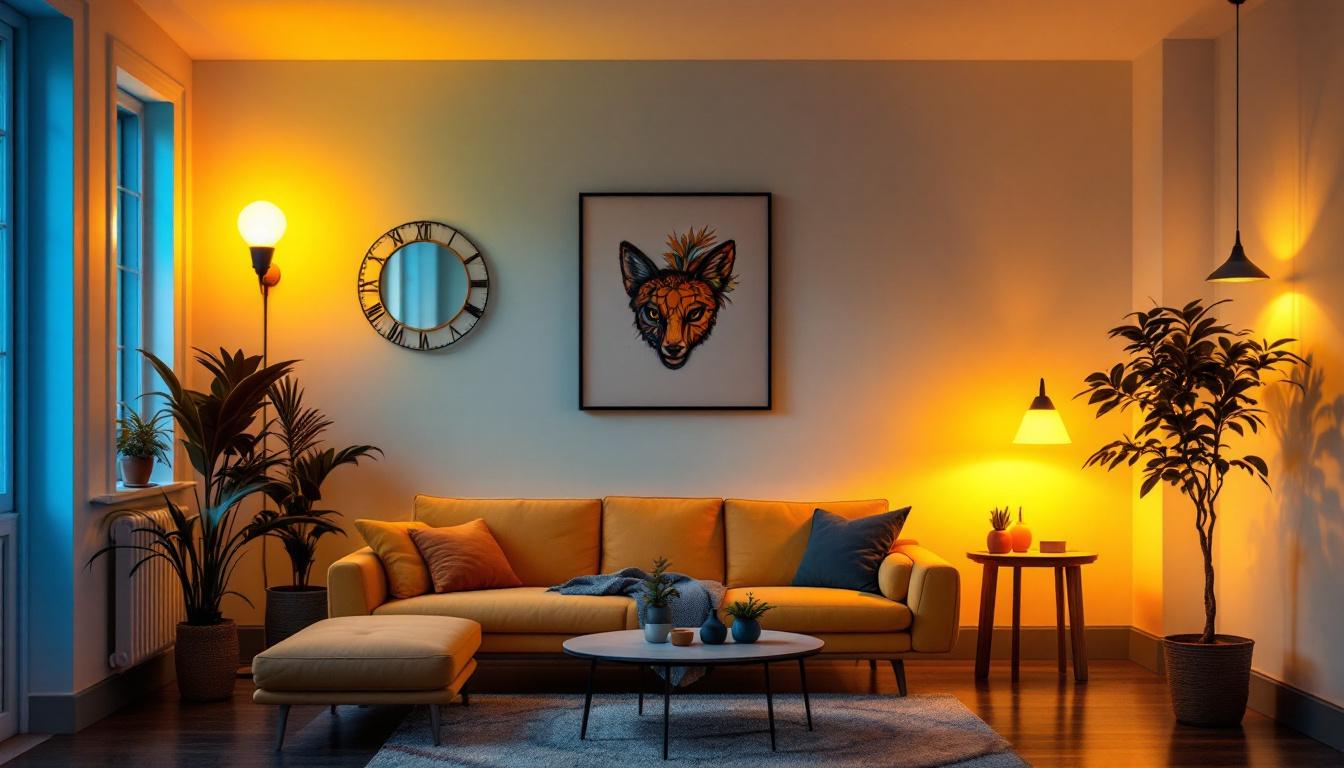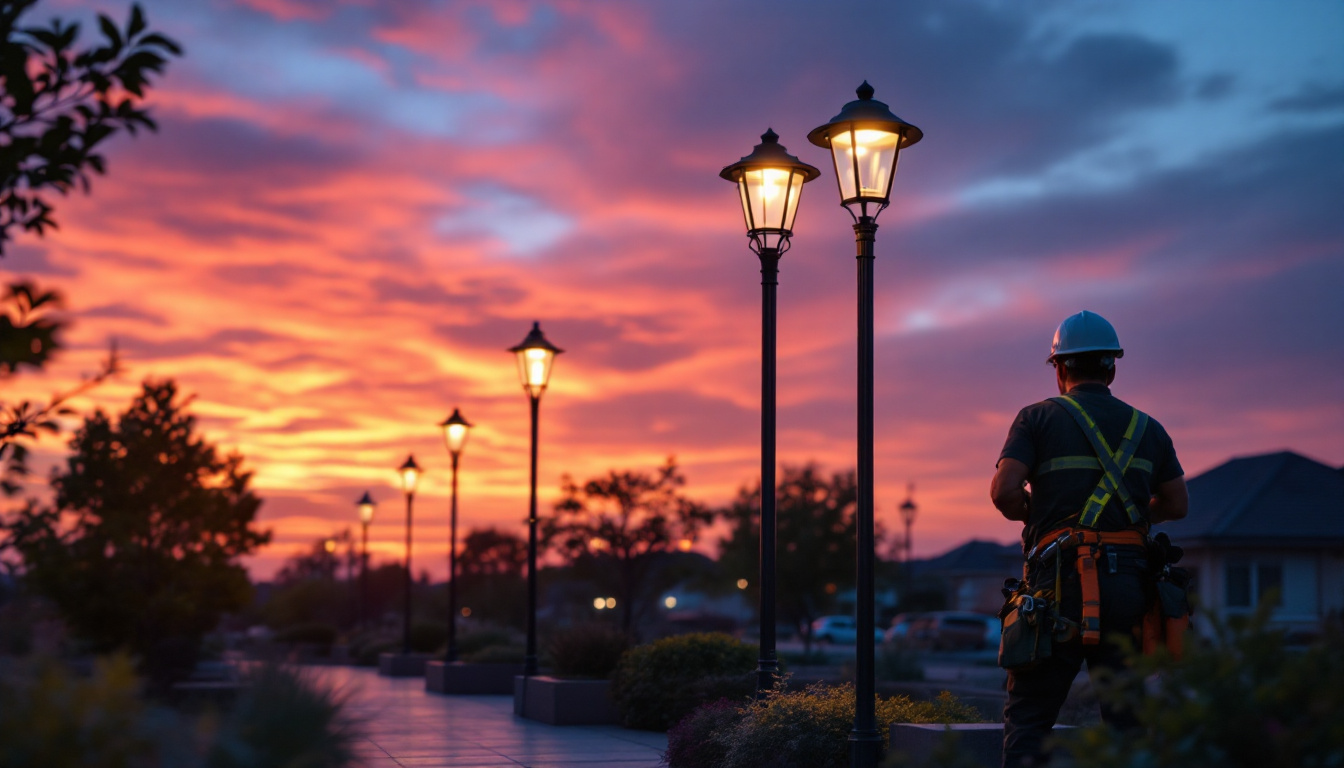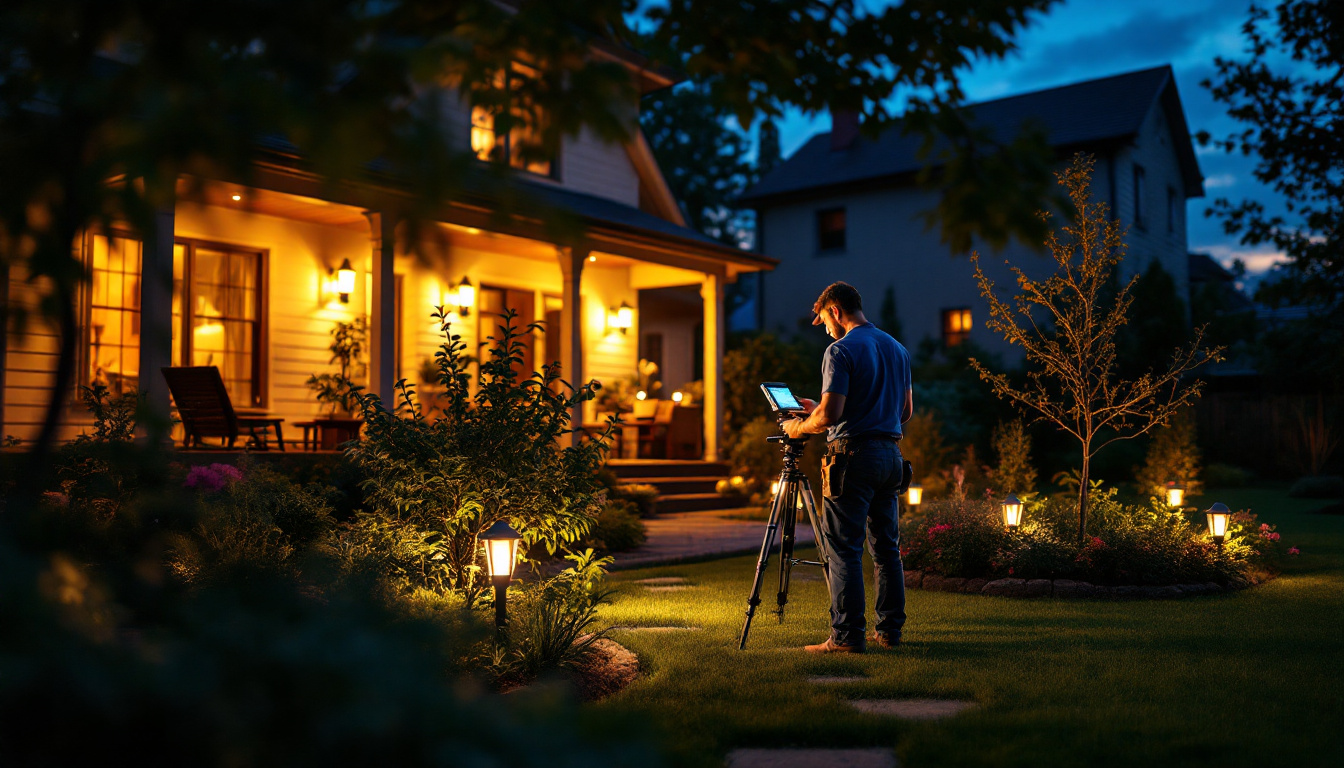
In recent years, LED technology has revolutionized the lighting industry, offering energy-efficient solutions that surpass traditional incandescent bulbs in longevity and efficiency. However, the transition from incandescent to LED has not been without its challenges, particularly in maintaining the aesthetic appeal that many consumers cherish. For lighting contractors, understanding the nuances of LED lights that mimic incandescent bulbs is crucial for meeting client expectations and enhancing project outcomes.
LEDs, or Light Emitting Diodes, have gained popularity due to their energy efficiency, reduced heat output, and longer lifespan. Unlike incandescent bulbs, which generate light by heating a filament, LEDs produce light through electroluminescence. This fundamental difference not only makes LEDs more efficient but also allows for a variety of designs and applications. However, the challenge remains in replicating the warm glow and familiar ambiance that incandescent bulbs provide.
Moreover, the advancements in LED technology have led to the development of smart lighting solutions that can be controlled remotely via smartphones or home automation systems. These innovations allow users to adjust brightness, color temperature, and even create lighting schedules that enhance both comfort and security in residential and commercial spaces. As the market for smart home devices continues to expand, the integration of LED lighting with other smart technologies is becoming increasingly prevalent, offering users unparalleled convenience and customization.
Despite the clear advantages of LED technology, many consumers still prefer the warm light quality of incandescent bulbs. This preference is often rooted in the emotional and psychological associations tied to traditional lighting. Therefore, manufacturers have developed LED options that closely resemble incandescent bulbs in both appearance and light quality, catering to the demands of the market.
Furthermore, the introduction of color-rendering index (CRI) ratings has played a significant role in consumer choices. A higher CRI indicates that the light source can render colors more accurately, which is particularly important in settings such as art galleries, retail spaces, and homes where aesthetics are paramount. As consumers become more educated about these specifications, they are better equipped to make informed decisions, leading to a growing demand for LED products that not only save energy but also provide a visually appealing environment.
For lighting contractors, it is essential to grasp the concept of light quality, which encompasses factors such as color temperature, color rendering index (CRI), and lumen output. These elements play a significant role in determining how closely an LED bulb can mimic an incandescent bulb.
Color temperature, measured in Kelvin (K), indicates the warmth or coolness of a light source. Incandescent bulbs typically emit a warm light with a color temperature ranging from 2700K to 3000K. In contrast, many LED bulbs are available in similar color temperatures, making it easier for contractors to find suitable replacements that offer the same inviting glow. When selecting LED options, it’s vital to choose those labeled as “warm white” to ensure compatibility with client preferences. Additionally, understanding the psychological effects of color temperature can enhance a contractor’s ability to design spaces that evoke specific moods; for instance, cooler temperatures around 4000K to 5000K can promote alertness and productivity, making them ideal for office environments, while warmer tones can create a cozy atmosphere in living areas.
The Color Rendering Index is a critical metric that measures how accurately a light source displays colors in comparison to natural light. Incandescent bulbs have a CRI of 100, providing excellent color rendering. For LED lights to effectively mimic this quality, a CRI of 90 or above is recommended. Lighting contractors should prioritize high-CRI LED options to ensure that colors appear vibrant and true to life, which is particularly important in residential and retail settings. Furthermore, it is worth noting that certain applications, such as art galleries or photography studios, may demand even higher CRI values to faithfully reproduce the hues and subtleties of artworks or products. In these cases, contractors should also consider the spectral power distribution of the light source, as it can significantly influence how colors are perceived under different lighting conditions.
Beyond the technical specifications, the physical design of LED lights that resemble incandescent bulbs is equally important. Many consumers appreciate the traditional look of incandescent bulbs, which often feature a warm glass envelope and familiar bulb shapes. Lighting contractors should be aware of the various designs available in the LED market that cater to these aesthetic preferences.
LED bulbs come in a variety of shapes and sizes, including A19, globe, and candelabra styles, which are designed to match traditional incandescent forms. When selecting LED replacements, contractors should consider the intended application and the visual impact of the bulb. For instance, using a classic A19 shape in a pendant fixture can maintain the traditional look while benefiting from the energy efficiency of LED technology.
Many manufacturers have gone a step further by creating LED bulbs with glass enclosures that mimic the appearance of incandescent bulbs. These bulbs often feature decorative filament designs that replicate the look of traditional incandescent filaments. By offering these visually appealing options, contractors can provide clients with LED solutions that do not compromise on style.
One of the most significant advantages of LED lighting is its energy efficiency. LED bulbs consume significantly less energy than their incandescent counterparts, leading to reduced electricity bills for consumers. Additionally, the longevity of LED lights—often lasting up to 25,000 hours or more—means less frequent replacements, which is a compelling selling point for contractors.
While the initial cost of LED bulbs may be higher than that of incandescent bulbs, the long-term savings in energy consumption and maintenance make LEDs a cost-effective choice. Lighting contractors should educate clients on the total cost of ownership, emphasizing that the investment in LED technology pays off over time through lower energy bills and reduced replacement costs.
In an era of increasing environmental awareness, the sustainability of LED lighting is another significant advantage. LEDs contain no hazardous materials and are 100% recyclable, unlike incandescent bulbs, which contain glass and can contribute to landfill waste. By promoting LED lighting, contractors can position themselves as environmentally conscious professionals, appealing to clients who prioritize sustainability.
When transitioning from incandescent to LED lighting, contractors must consider various installation factors to ensure optimal performance and client satisfaction. Understanding the differences in electrical requirements and compatibility issues is essential for a successful installation.
Many clients enjoy the ability to dim their lighting for various moods and activities. However, not all LED bulbs are compatible with existing dimmer switches designed for incandescent bulbs. Contractors should recommend LED bulbs specifically labeled as “dimmable” and may need to suggest upgrading dimmer switches to ensure compatibility. This attention to detail can significantly enhance the overall lighting experience for clients.
Another critical consideration is the compatibility of LED bulbs with existing fixtures. Some fixtures may not be designed to accommodate the heat dissipation characteristics of LED technology. Contractors should assess the fixtures being used and recommend appropriate LED options that ensure safety and performance. This may involve selecting bulbs with lower wattages or specific designs that fit within the fixture’s constraints.
As lighting contractors, effective communication with clients is vital for ensuring they understand the benefits and features of LED lighting. Educating clients about the differences between incandescent and LED options can help them make informed decisions and appreciate the value of their investment.
Providing clients with demonstrations of LED lighting can be an effective way to showcase the advantages of these products. Whether through side-by-side comparisons or sample installations, allowing clients to see and experience the differences firsthand can help alleviate concerns about transitioning to LED technology. Highlighting aspects such as energy savings, longevity, and aesthetic appeal can further reinforce the benefits.
Clients may have concerns about the quality of light produced by LEDs compared to incandescent bulbs. Addressing these concerns with factual information about color temperature, CRI, and available designs can help build trust. Providing resources, such as brochures or links to informative websites, can also empower clients to make confident choices.
The landscape of LED lighting continues to evolve, with ongoing advancements in technology and design. As a lighting contractor, staying informed about emerging trends and innovations is essential for maintaining a competitive edge in the industry.
One of the most exciting developments in the lighting industry is the integration of smart technology with LED lighting. Smart LEDs allow for remote control, scheduling, and automation, enhancing convenience and energy efficiency. Contractors should consider offering smart LED options to clients who seek modern, customizable lighting solutions that align with contemporary lifestyles.
Another area of innovation is the development of color-tunable LED lights, which allow users to adjust the color temperature and intensity of their lighting. This flexibility can create dynamic environments suited to various activities and moods. By staying abreast of these advancements, contractors can offer cutting-edge solutions that cater to the evolving needs of their clients.
As the lighting industry continues to shift towards energy-efficient solutions, understanding LED lights that resemble incandescent bulbs is essential for lighting contractors. By grasping the science behind light quality, design aesthetics, energy efficiency, and installation considerations, contractors can confidently recommend LED options that meet client expectations.
Moreover, effective communication and education play a crucial role in helping clients navigate the transition from traditional incandescent lighting to modern LED solutions. By embracing the advancements in LED technology and staying informed about industry trends, lighting contractors can position themselves as trusted experts, ultimately enhancing their reputation and business success.
Ready to elevate your lighting game with LEDs that capture the classic charm of incandescent bulbs? Look no further than LumenWholesale for a seamless transition to energy-efficient lighting. Our spec-grade products promise top quality at wholesale prices, ensuring you get the best value for your investment. Say goodbye to middleman markups and hello to a vast selection of reliable, high-performance lighting. Plus, with free shipping on bulk orders, you can stock up on premium lighting solutions without the worry of hidden fees. Make the smart choice for your lighting needs and experience Wholesale Lighting at the Best Value today.

Discover how LED T5 technology can revolutionize the lighting industry by significantly cutting costs for contractors.

Discover the essentials of 300-watt LED lights in just five minutes.

Discover how outdoor light posts can illuminate new business opportunities for lighting contractors.

Discover essential tips and expert insights for lighting contractors to master the art of installing flood lights outdoors.